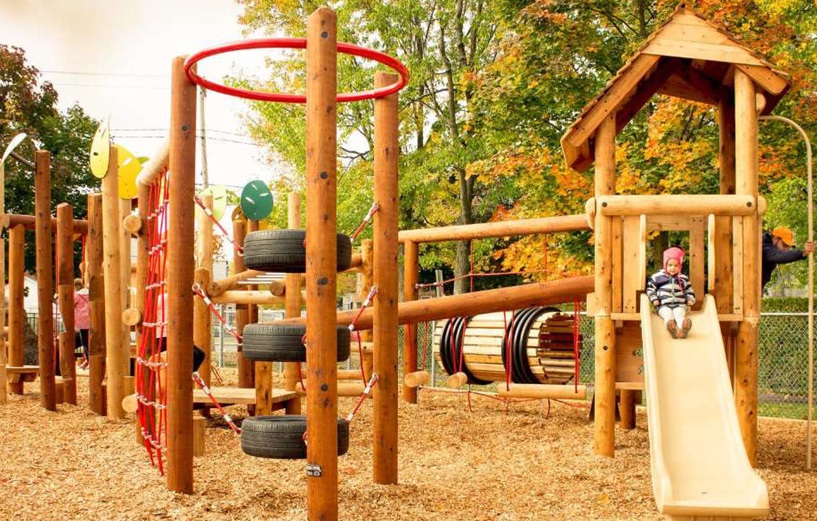Natural playgrounds are the dream of every parent to have a forest at the back of the house and enjoy it with their children where they can play and spend time acquiring new sensory talents and gross motor skills. But today’s times mark that we live in urban or suburban societies where these spaces are not so common, and we must resort to playgrounds where they can enjoy games in addition to developing cognitive and social skills. Luckily, one constantly learns and is clear about the benefits of playing in contact with nature, which has led to the use of other types of playgrounds more oriented towards nature.
Natural playground
The natural playgrounds are made of raw materials. Playground designers are usually very creative and imaginative people; for that reason, the materials that can be part of a playground of this style vary from trees, logs, rocks, plants, sand, ropes, bridges, and houses on trees. In some of the natural playground characteristics, we can find topographic features such as mounds, slopes, steps, tunnels, and more.
There are also logs thrown to generate adventures and develop, in addition to children’s creativity, the strength to climb and be on them. We also find excavation areas, musical instruments outdoors for children’s use and imagination in a variety of spaces, and geographical difficulties that make children experience gross motor skills apart from their physique.
What does a natural playground look like?
Natural elements such as earth tones are common in natural playgrounds. The earth’s color palette and topography can be the vital link to unite the urban and the wild in the middle of a community or school. It should be borne in mind that a playground can also be a hybrid between nature and have a traditional playground structure inspired by nature and match the design.
Another look at the playground
Playgrounds of this nature present opportunities for exploration, discovery, and learning in different ways among nature with teams that come and are on the ground, generating a separate connection and fostering another game. Running, crawling, climbing, jumping, smelling, feeling are elements that will be present and will provide children with much more significant development of the senses.
Numerous studies show that children enjoy the game more in natural playgrounds that take advantage of the environment and link it more to the game because of how fun and adventurous it transforms. There are also studies and concerns of society regarding the materials with which traditional playgrounds are built; not all designers comply with the regulations regarding the safety and quality of materials, exposing children. In natural playgrounds, that problem does not exist; practically everything is of natural origin, giving a touch of sustainability; for example, in Westplay, the play modules are constructed without the chemical treatment of Canadian eastern white cedar or western red cedar. No risk of splinters, good structural uniformity, and very high resistance.
How about a natural playground? Have you had the opportunity to play in a natural playground? Share your experience by commenting or communicating with us.
If you want to know more about this topic, you can subscribe to our newsletter and access our free report entitled How to finance a playground for my community?
Imagen for Westplay
